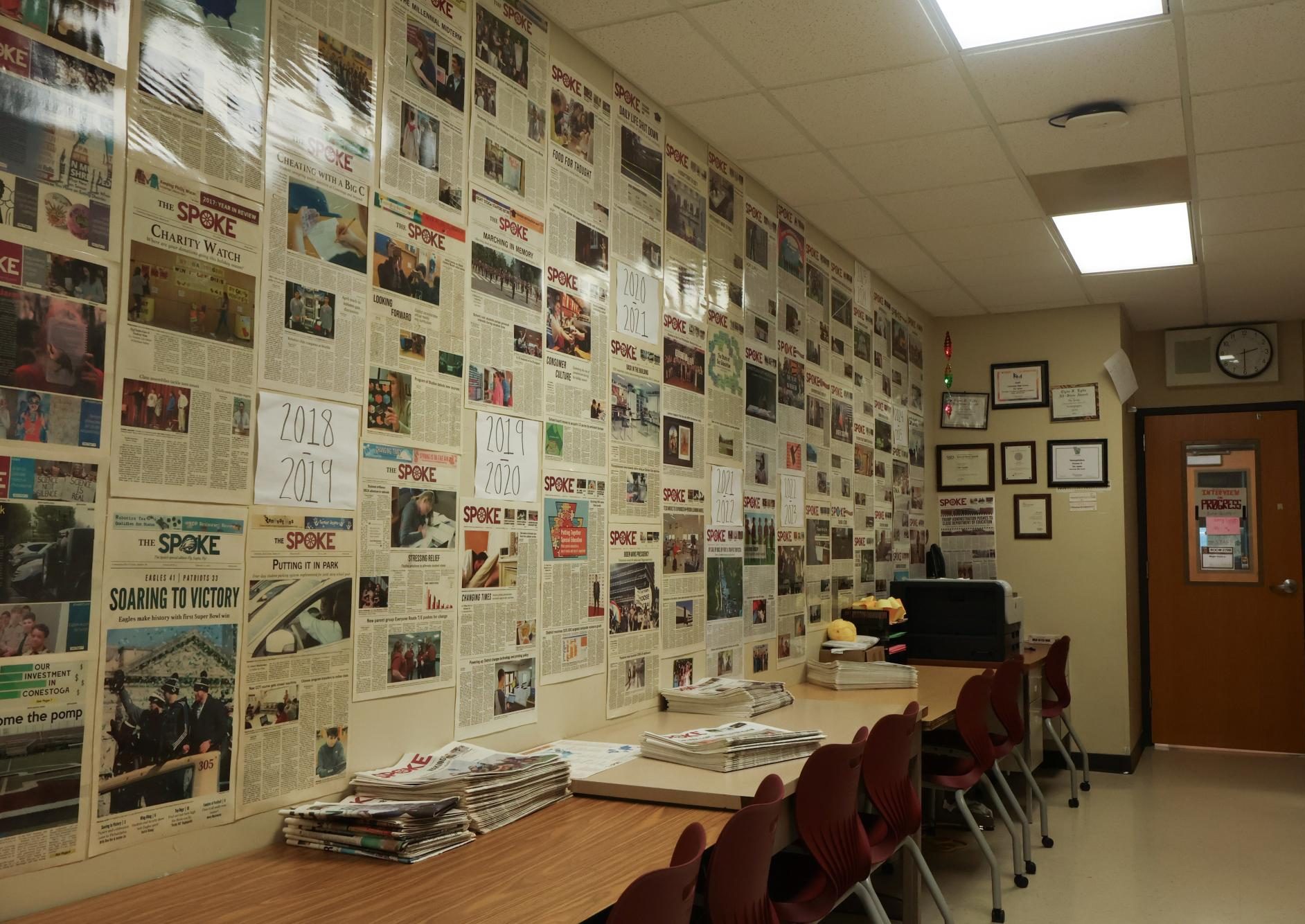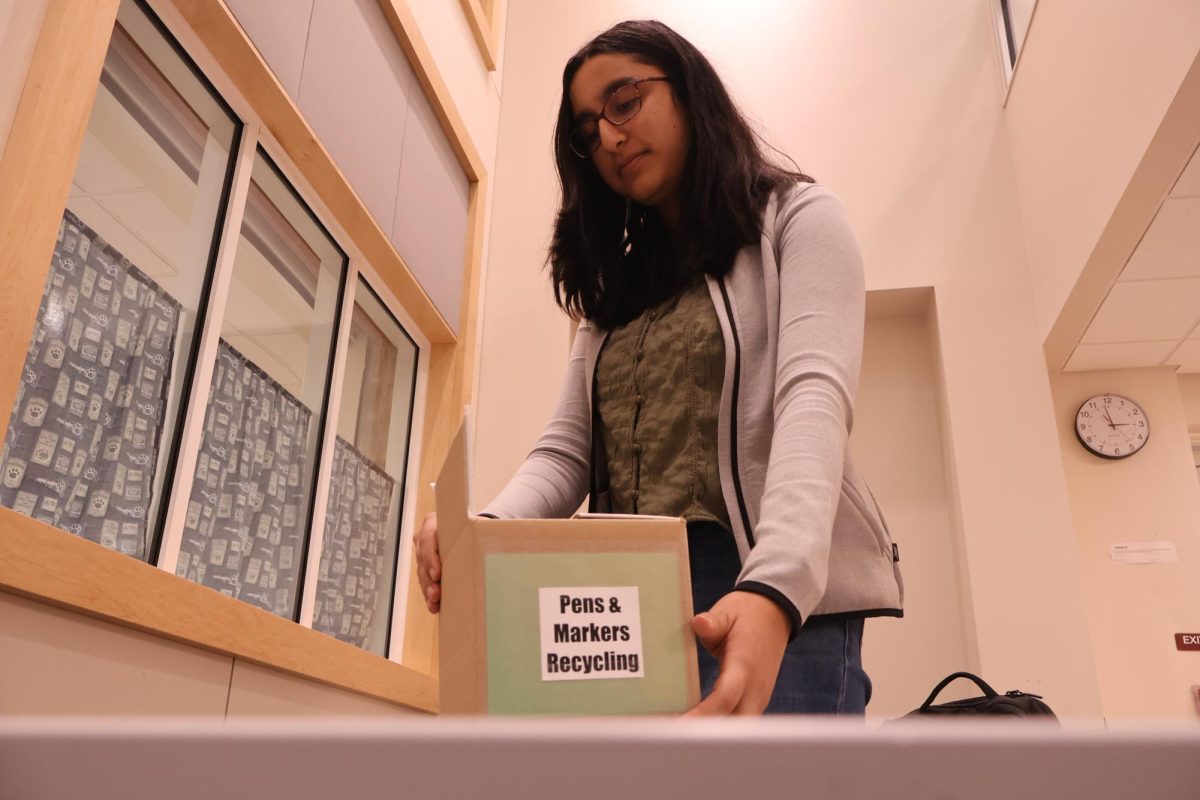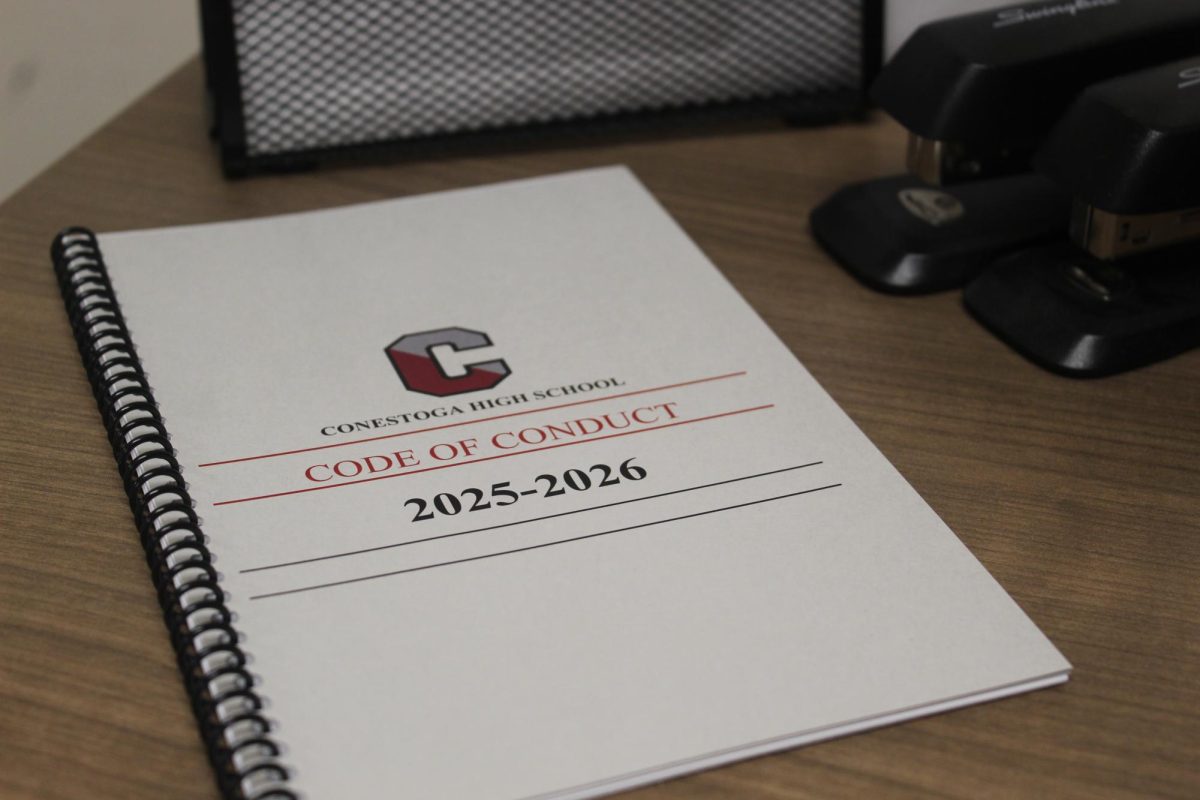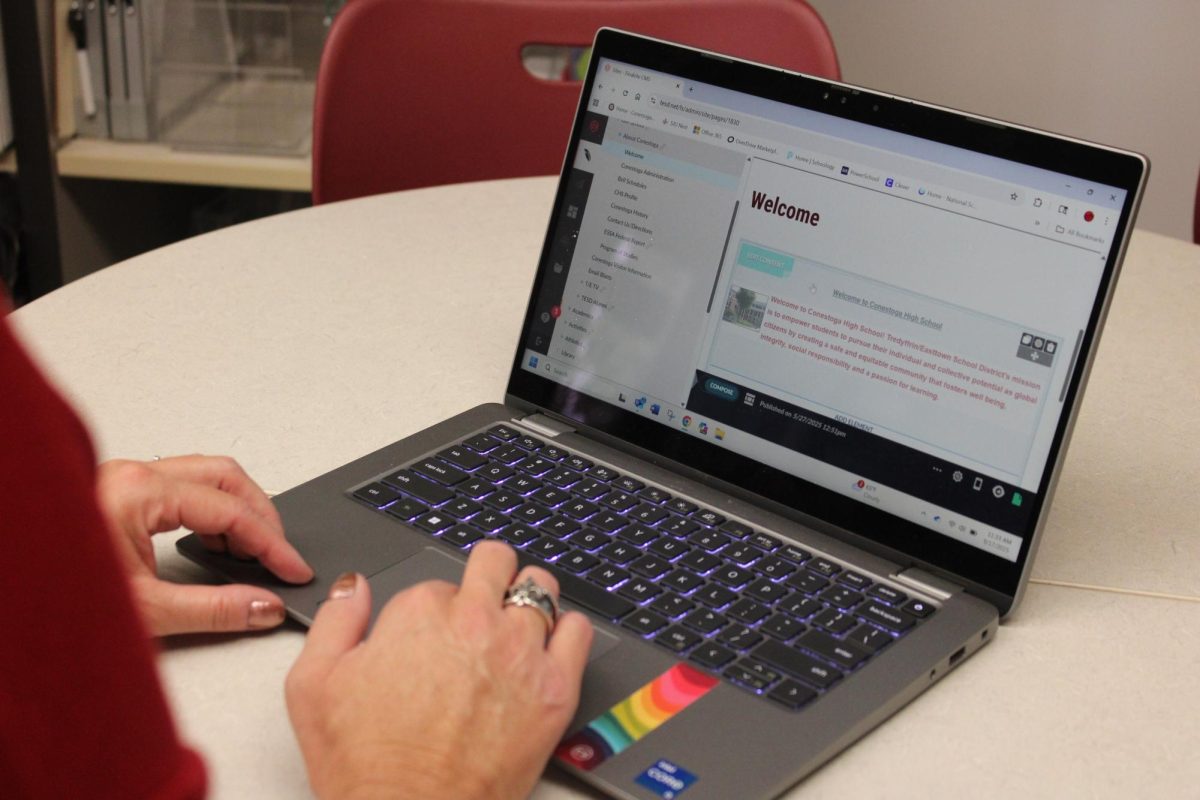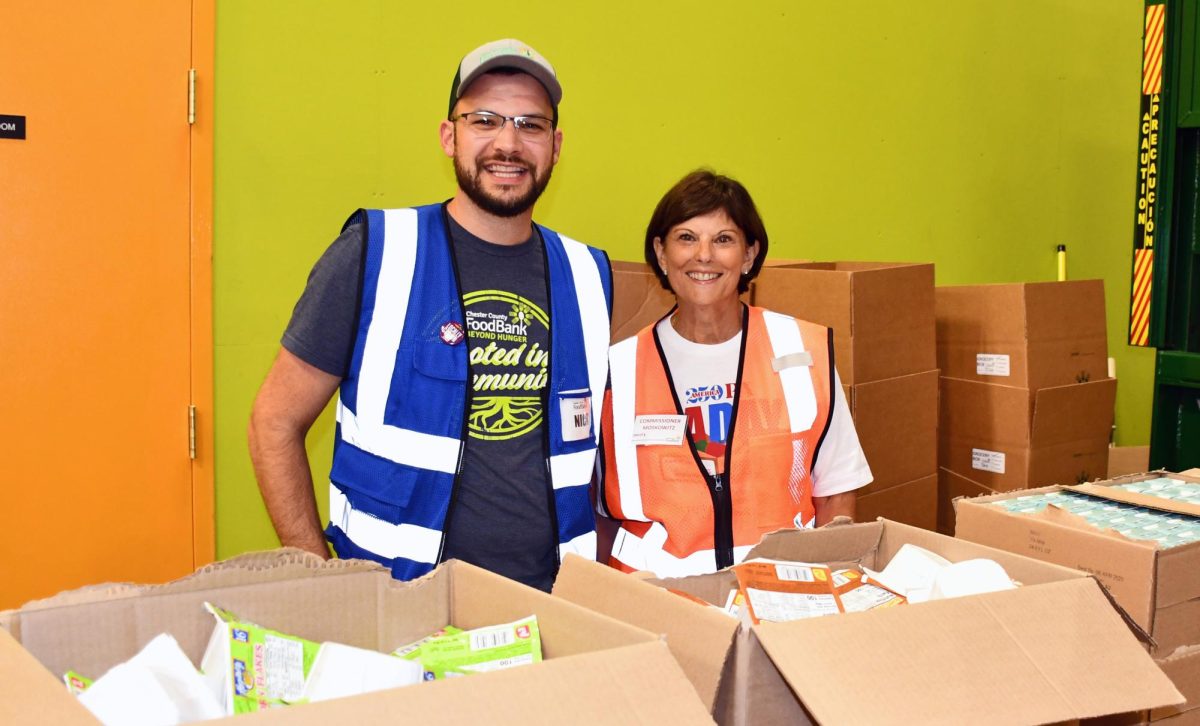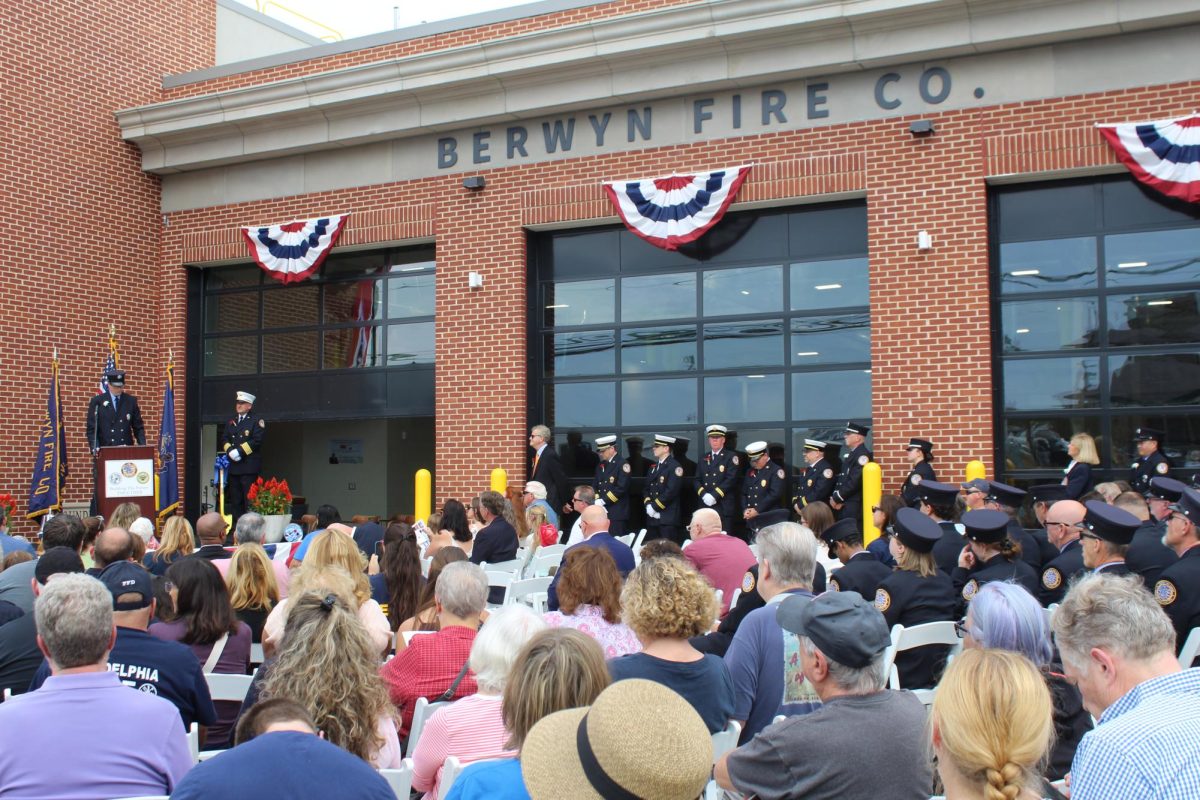The clock shows 2:30 a.m. during the 2000-01 school year. In a printing facility outside of school, then-senior and Managing Editor Jason Mazda and then-Editor-in-Chief Emily Bagby are still awake, working with a CD and computer. Fighting exhaustion, they are determined to bring print pages of Conestoga High School’s student-run newspaper to its readers in the school and T/E community.
“It was crazy. I think this was before we had cell phones, and both of our parents were not thrilled with us for being out that late. They were calling and trying to figure out where we were, but we got (the paper) out, and we kind of fine-tuned the process a little bit moving forward, so it didn’t take quite that long every time,” Mazda said. “Those experiences — being just working late into the night to figure it out — it was good life experience.”
Years later, students stay up late into the evening for the same purpose: reporting for The Spoke. This school year, the paper completes its 75th volume, continuing a legacy of acting as a local media source for the Tredyffrin/Easttown School District community.
The publication dates back to 1955, when the school transitioned from Tredyffrin/Easttown High School to Conestoga Senior High School, and its student paper was officially titled The Conestoga Spoke. Prior to that, the paper was known as the Eastfrin Echoes. In 1992, it adopted the now-familiar name The Spoke.
Class of 1977 alumnus Art Stewart was a student journalist for the newspaper for three years. He remembers writing music columns and covering various stories throughout his time on the paper. Stewart appreciated The Spoke as an outlet for communication between student journalists and their community.
“It (The Spoke) was pretty well read. There weren’t many publications, or there weren’t many communication vehicles to begin with in those days,” Stewart said. “I wasn’t the only one who was young and ambitious, who wanted to be a writer, who wanted to have a voice, to be able to have a vehicle to communicate. So, it was a big deal for those of us who felt that calling.”
Generations of students have felt that same calling and made their contribution to the newspaper. They have received guidance from advisers like retired Conestoga teacher Cyndi Hyatt, who served as an adviser of The Spoke from 2006-22. For Hyatt, The Spoke has played a significant role within the area and is rooted in community pride.
“What the president (of the Pennsylvania School Press Association) said was that The Spoke has been the example paper for all these advisers in Pennsylvania. They look to The Spoke,” Hyatt said. “There’s a real testament to that. The Spoke gave us 75 years at Conestoga. That’s pretty impressive. It’s really part of the fabric of our school and our community.”
Reporters cover stories, impact community
Throughout The Spoke’s history, student journalists have made efforts to record significant local events. On one occasion, Henry Rome, editor-in-chief for the 2008-09 school year, reported on a district elementary school janitor who committed multiple bank robberies and failed state background checks.
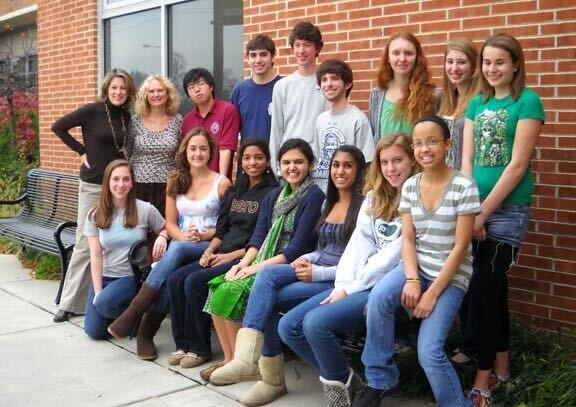
Rome worked alongside other reporters during his time to fight back against external criticism. One of their strategies was to prioritize stoganews.com, the rudimentary website for the paper, in order to provide another outlet for reporting beyond print publications. Lavi Ben Dor was the first Multimedia Editor in charge of the website in 2011-12.
“Stories that expose problems with the school, things that the administration wasn’t adequately dealing with, (were) really valuable because I think that’s one of the core values of journalism: holding truth to power,” Ben Dor said. “Getting to do that work as a student, getting to call out the administration, getting to call out problems in school, and having the support of Mrs. Hyatt and (former adviser Susan Gregory) to do that sort of work and publish that, have the school talking about it, (and) thinking about (an) issue was just a really cool opportunity that I’m sure not a lot of schools would have afforded me.”
As a freshman in high school, Meghan Morris observed that news was shifting more toward online spaces and recognized the need for a local news source that informed the community.
Morris went on to be co-editor-in-chief of The Spoke during the 2010-11 school year, having covered articles ranging from the lack of concussion protocol in school sports to the creation of the nonprofit Ryan’s Case for Smiles after a mother lost her son to cancer.
“There were still local newspapers, but they were getting thinner and thinner. That meant that there were a lot fewer professional eyes on Tredyffrin/Easttown and Chester County,” Morris said. “I saw firsthand how important it was for student journalists to make sure that we were filling the community’s needs in terms of presenting information about not just what was going on at things like school sporting events, but also the school board and other things that affected not only our students but our broader community.”
Similar to Morris, then-Co-Editor-in-Chief Avery Maslowsky for the 2018-19 school year feels that the articles she wrote in high school still resonate with her today, such as one that initiated discussion on body image struggles.
“We did a story about body image. I just remembered that being a really impactful story because in the 2010s it was something that people didn’t want to talk about: eating disorders and body image and body dysmorphia,” Maslowsky said. “It opened my eyes to a new side of our generation. People were willing to talk about it if you gave them the space to talk about it.”
Despite the four-year turn-around for The Spoke staff, the core values of the paper have remained unchanged for the past 75 years. Adviser for The Spoke from 2001-20 and teacher Susan Gregory felt one thing remained consistent across all of the groups of students she assisted: the quality of work produced by Spoke staff.
“Advising Spoke was a blessing for me. I worked with extremely talented and dedicated students who had big hearts and cared deeply about telling stories and making a difference,” Gregory said. “Each class of editors passed down their ethics and values to the next class. There became a way that we did things on The Spoke. The students made the classroom into a workplace. They made me a better adviser and teacher.”
Former members pioneered changes, now witness shifts in student journalism
Alumni of the newspaper have adapted within The Spoke and observed shifts in journalism throughout the years. Hyatt and Gregory worked as co-advisers in the 2000s. They suggested decreasing the print publication’s pages, which had originally been 32, and focusing on creating fewer individual stories that were stronger.
Hyatt also saw The Spoke’s staff grow from 40 to more than 60 members during her tenure. Although she witnessed subtle changes to the paper, such as a broadened community and outside-district focus, Hyatt feels that there has been a continuity of The Spoke’s standards and commitment to reporting throughout her time as an adviser.
“Since I began at Spoke and since I left, I think that Spoke really represents the student demographic here in a lot of ways,” Hyatt said. “The Spoke has changed with the ways the school has changed. I think we’ve kept up. We haven’t been stuck in some rut. The Spoke has evolved along with Conestoga.”
A major change occurred during the COVID-19 pandemic when Conestoga transitioned to hybrid learning in 2020-21 and while Sophia Pan served as a managing editor. Although staff had created the website years before, Pan faced difficulties leading the paper as it adapted to online-based reporting. Reporters could no longer have in-person interviews, and there was a change in the designation of stories with a larger focus on the website.
“We had to start splitting people into primarily web-based versus primarily print-based (stories). That was a big adjustment, because before that, everybody was going into print, and web was sort of just uploading print stories and maybe a few additional pieces. COVID was the year where we had to (focus on web),” Pan said.
Currently a junior in college, Pan noted that since the COVID-19 pandemic, The Spoke has continued increasing its online presence. Particularly, it has various social media accounts and a mobile app in addition to the website, broadening its scope of content.
“I remember probably last year I was looking at The Spoke app because I still have it downloaded on my phone. I was like, ‘Whoa, this is super cool stuff,’” Pan said. “It’s nice to see that the web is getting a lot of the same love (as print).”
Since his time in The Spoke in the 1970s, Stewart has also seen changes in how the newspaper adapts to the needs, ideas and different media presented by community members. Despite the differences from when he was a high school journalist, Stewart feels that The Spoke’s ethics have remained the same.
“The continuity is the output, the effort, the attention to detail, it was always there. Conestoga is one of the top high schools in the country. It was one of the top high schools in the country 40 years ago. This didn’t happen overnight. This school district has been one of the best school districts in the country for a couple of generations,” Stewart said. “I think the standards were always there. I think the standards are there today.”
Students apply skills from newspaper in current jobs
After their time in the newspaper, alumni have used experiences from their time at The Spoke in various professions and passions. Serving as a sports editor in 1989-90, Jodi Warren now works as an interior designer. Despite not pursuing journalism professionally after high school, she still applies skills from The Spoke within her career.
“I pull different pieces together (and) present them in a way that is easy for my clients to understand, whether that’s a digital mood board, or some people like me to write directions out for them,” Warren said. “Those types of skills that I developed started in high school with a focus on English.”
Ben Dor continues to reflect on instances of pushback from his time at The Spoke as an attorney based in the Washington, D.C. firm Gibson, Dunn & Crutcher. He has taken on a large amount of pro bono work, cases taken on without payment, with a focus on First Amendment rights. Ben Dor said that writing, holding people accountable and protecting free speech rights are concepts he began caring about at The Spoke.
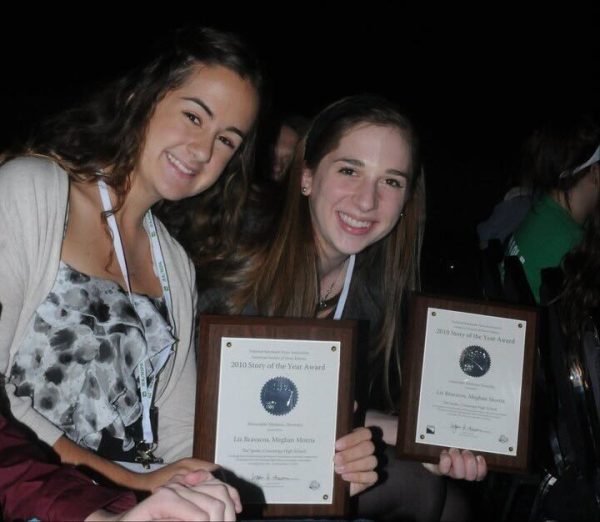
“There was the school cheerleader case at the Supreme Court (Mahanoy Area School District v. B.L.). I led the effort at my firm to put together a brief filed in support of the student in that case. (It) was really special to kind of give back to the journalism community that had helped me because obviously it was a free speech case, but a lot of the same principles relevant to free speech rights are relevant to free press rights,” Ben Dor said.
Some alumni have also recognized that their work in The Spoke influenced their professional journalism careers. Morris currently serves as Business Insider’s Singapore Bureau Chief. She builds on many of the skills she learned at The Spoke as a professional journalist. While uncovering the links between a billionaire family in New York City and Jeffrey Epstein postcollege, she found her experience in The Spoke foundational to giving her a sense of responsibility.
“That’s a pretty crazy story for somebody in their 20s to write and to take on, but I felt really emboldened by a sense of justice here (at The Spoke) and my commitment to making sure that our readers knew the truth about what was going on,” Morris said. “I think I can trace the fortitude I had in standing up to a billionaire and in uncovering some pretty significant allegations even back to my days as a student journalist because I learned as a teenager that it’s important to fight for the stories that you believe in.”
Maslowsky currently works as a TV news reporter for KSAT 12 News, which is based in San Antonio, Texas. The Spoke played a major role in determining her path after high school, and she continues to stay in contact with the publication. Alongside Morris and other alumni, Maslowski speaks to new generations of student journalists at The Spoke and passes on her knowledge.
“The Spoke is so special. It is not like any other club or group at Conestoga. It is the real deal, and The Spoke is what gave me a job in journalism,” Maslowsky said. “It gave me the tools to be able to find myself as a journalist and find myself as a person, how I talk to people, how I network, how I build sources, how I best present myself to the community and build my brand as a journalist, and then also figure out who I am.”
Saktisri Gowrishankar can be reached at [email protected].
Erin Zhang can be reached at [email protected].
